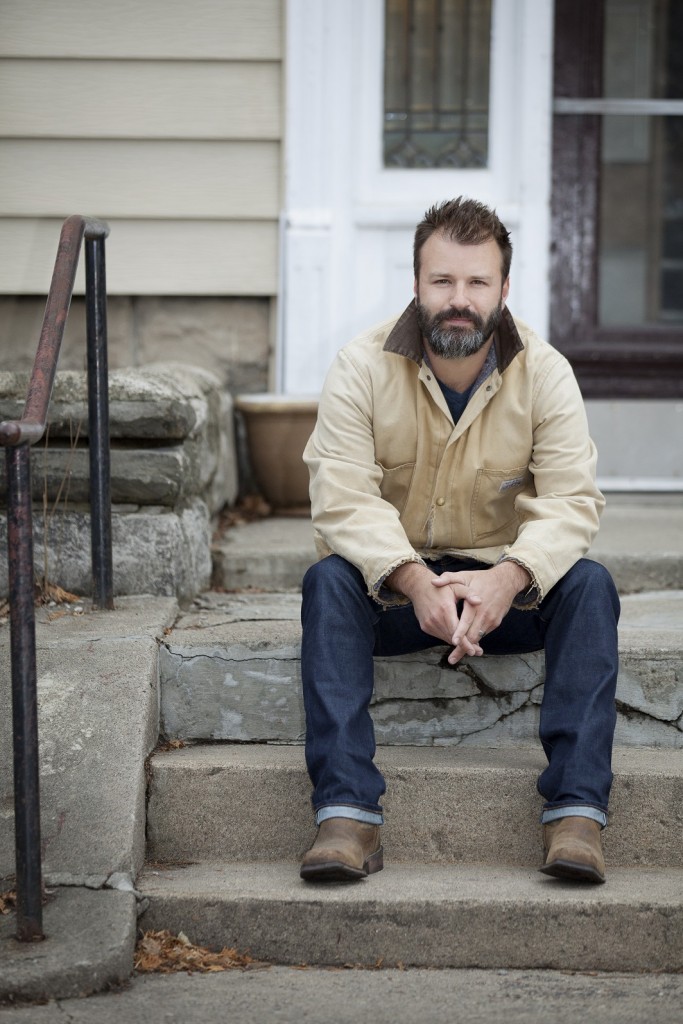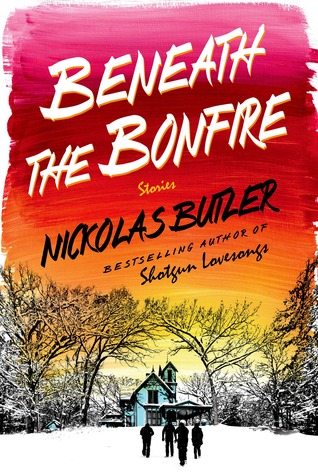Interview: Nickolas Butler
 Midwestern Gothic staffer Giuliana Eggleston talked with author Nickolas Butler about the Driftless Area, Midwest grit, the importance of “story,” and more.
Midwestern Gothic staffer Giuliana Eggleston talked with author Nickolas Butler about the Driftless Area, Midwest grit, the importance of “story,” and more.
**
Giuliana Eggleston: What’s your connection to the Midwest?
Nickolas Butler: I was born in Allentown, Pennsylvania but grew up in Eau Claire, Wisconsin; my family moved to Eau Claire when I was about four. After graduating high school, I attended college at DePaul University in Chicago and the University of Wisconsin-Madison. My wife and I then stayed in Madison for about a decade before moving up to Arden Hills, Minnesota. While we were living in Minnesota I commuted down to Iowa City, Iowa for graduate school at the Writer’s Workshop. And in the summer of 2013 we decided to move back to Eau Claire, where our both sets of our parents still live.
So, basically, outside of living in British Columbia for two months, and the first four years of my life, I’ll lived more or less continuously in the American Middlewest. I love it here. Of course, I also love New Orleans, San Francisco, New York, Boston, Santa Fe, Seattle, Portland, Denver… but … For my wife and I, family is a big consideration and most of our family is here.
GE: How has being raised in Wisconsin inspired the landscapes in your most recent book of short stories, Beneath the Bonfire?
NB: The inspiration was totally natural. I just wrote about landscapes that I knew intimately, that I could imagine easily, accurately. During my time at the Iowa Writer’s Workshop I suppose I began to identify myself more and more by my Wisconsin heritage – it was something I was proud of, something I wanted to display in my writing. In the title story, for example, I was influenced by a family-friend’s anecdote of scuba-diving in frozen Lake Monona (in Madison). Writing the story came easily because I had lived on Morrison Street for about a year in Madison, and my backyard was literally Lake Monona – I knew that landscape, that lake, very well. In the story, “Morels”, I had an in-depth knowledge of the Driftless Area along the Mississippi River, and I also had experience foraging mushrooms – that story came easily.
GE: As both your novel Shotgun Lovesongs and your book of short stories Beneath the Bonfire are set to the Midwest backdrop, how do you see your stories as needing to occur in the Midwest as opposed to somewhere else?
NB: I don’t particularly think about “need”, nor do I think about “somewhere else”. I want to do what is right for the story, and in most cases, quite naturally, this means setting a story in a landscape I’m well familiar with. I’ve always had an affinity for those writers whose careers were marked by exploring or illustrating their homelands: Jim Harrison, Marilynne Robinson, Thomas McGuane, Ken Kesey, Rick Bass, Louise Erdrich. If Jim Harrison ever wrote a novel that took place in China, I’m sure it would be great and I’d absolutely read it, maybe it would even be invigorating, but I’d just as soon read another Brown Dog adventure set in the Upper Peninsula.
GE: The stories featured in Beneath the Bonfire have been described by many as “gritty” stories from the heartland. Do you see the Midwest as being an inherently grittier place than the rest of the U.S.? What draws you to writing about this type of living, which many know nothing about?

NB: I’m not sure that the Midwest is any more gritty than the Deep South, Appalachia, the Southwest, Alaska, or for that matter parts of any major US city. So, I think in this case, “gritty” is just an adjective that applies to the stories and characters, and not particularly to the settings. The final story in the collection, “Apples”, isn’t really gritty, I think. I’ve always thought the emotional key of that story, or “Train People Move Slow”, is more “sweet” or “kindhearted”, maybe “melancholic”.
For me, it’s not about writing a cast of down-on-their-luck-blue-collar-ne’er-do-wells. I’m interested in interjecting other characters that are very successful, that have left their hometowns and/or the Midwest, and how these characters come into conflict with one another.
GE: How can you tell when a piece is finished?
NB: The totally honest way to answer this question is this: When I’m sick and tired of it.
GE: Along with fiction, you also write poetry and nonfiction. Is there a style of writing that you prefer? How does each style of writing allow you to express different thoughts?
NB: I never set out to be a novelist. I always thought that writing a novel was akin to building a bridge or performing open heart surgery – it was an incomprehensible feat. But after finishing two novels I can attest to the feelings that accompany the completion of a novel, and many of those feelings are truly so gratifying. I’m not a runner, but I imagine it’s like finishing a marathon. You’ve done something most people in their lives never will, and that’s unique and special and commendable.
And in terms of styles or modes… I don’t think about writing in terms of genres or forms. I think about communicating a story, or an emotion, and I try to figure out how best to do that. I will say that writing poetry is nice because I can contain an entire piece, an idea in a FIELD NOTES pocket book, which is convenient. Can’t do that with a novel.
GE: How do you know when an idea will become a story?
NB: Good question. Well, not every idea makes a good story and not every story is a great – I abandon ideas and stories from time to time. I studied with Ethan Canin at Iowa and he said (and I’m paraphrasing here, probably poorly) that fiction isn’t really about ideas, it’s about stories. I agree with him. If you look at a writer like Cormac McCarthy for example, his novels are chock-full of ideas – no doubt about it. But the ideas never supersede his storylines, which are generally pretty basic. I think for me, the story comes first, and the story has to be compelling enough for me to invest months or years of my life working on. While I’m writing the story, ideas are obviously explored, and those ideas carry you through the writing. I think that those ideas should somehow interest your characters, too… It’s hard. It’s a hard thing to stay committed to the story and the characters, when the anatomy of an idea may seem so attractive and alluring.
GE: What’s next for you?
NB: My next novel will be published in early 2017 by Ecco. It’s called The Faithlessness of Men, and it’s set in a Boy Scout camp in northern Wisconsin over the course of about sixty years of American history. So for the next six months or so, I’ll be working on that manuscript with my new editor, Megan Lynch.
I’ve got an idea for the next-next novel, but right now I want to just read books (right now I’m reading Annie Dillard’s essays and The Power of the Dog by Don Winslow), gather ideas, and think about plotting.
**
Nickolas Butler was born in Allentown, Pennsylvania, raised in Eau Claire, Wisconsin and educated at the University of Wisconsin-Madison and the University of Iowa Writer’s Workshop. He is the author of the internationally-best selling novel Shotgun Lovesongs and a collection of short stories entitled, Beneath the Bonfire. He is the winner of France’s prestigious PAGE Prix America, the 2014 Great Lakes Great Reads Award, the 2014 Midwest Independent Booksellers Award, the 2015 Wisconsin Library Association Literary Award, the 2015 UW-Whitewater Chancellor’s Regional Literary Award, and has been long-listed for the 2014 Flaherty Dunnan Award for First Novel and short-listed for France’s FNAC Prix. His short stories, poetry, and non-fiction have appeared in: Ploughshares, The Kenyon Review Online, The Lumberyard, The Christian Science Monitor, Narrative, Sixth Finch, and several other publications.






